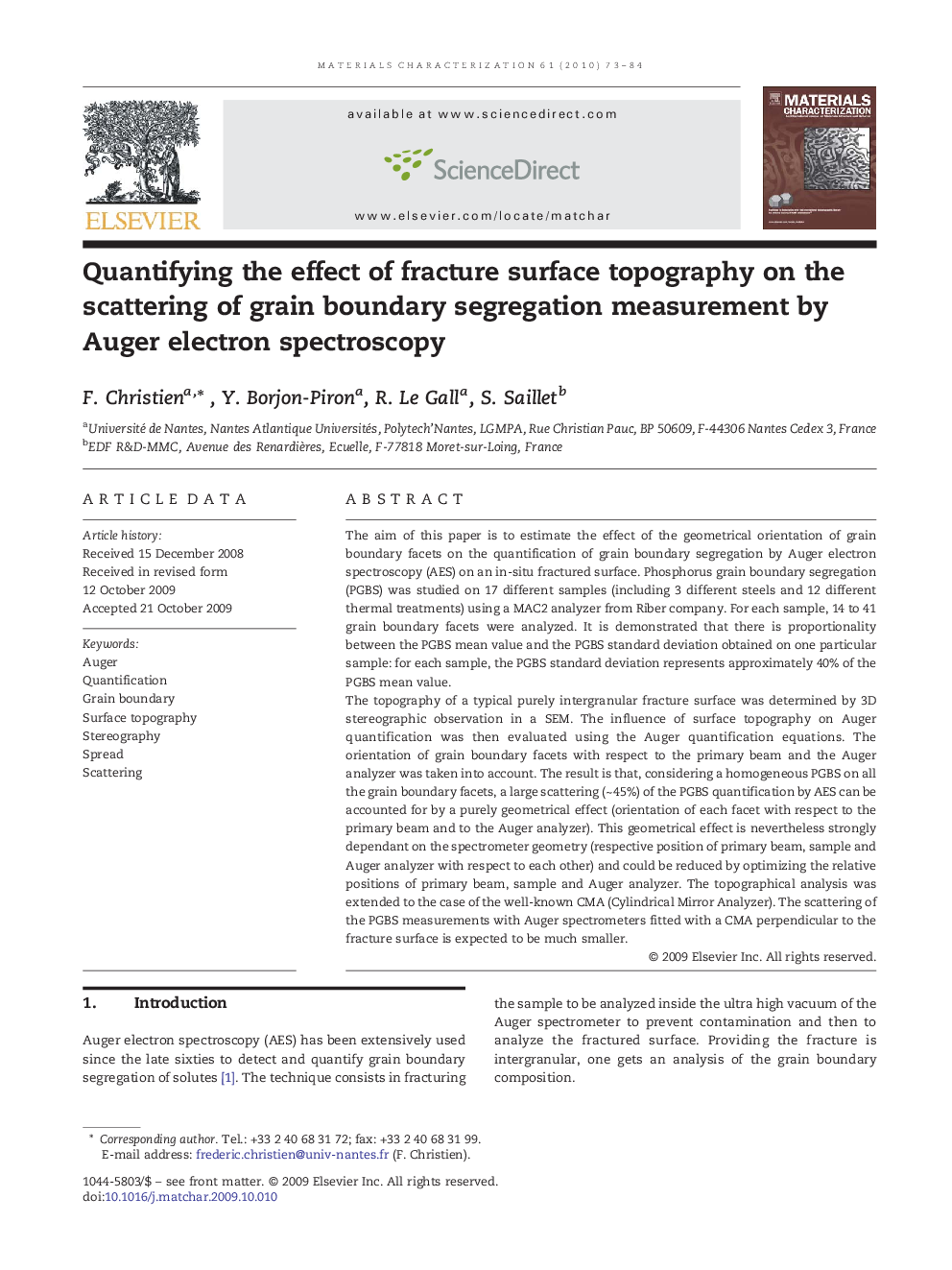| کد مقاله | کد نشریه | سال انتشار | مقاله انگلیسی | نسخه تمام متن |
|---|---|---|---|---|
| 1572534 | 1000686 | 2010 | 12 صفحه PDF | دانلود رایگان |

The aim of this paper is to estimate the effect of the geometrical orientation of grain boundary facets on the quantification of grain boundary segregation by Auger electron spectroscopy (AES) on an in-situ fractured surface. Phosphorus grain boundary segregation (PGBS) was studied on 17 different samples (including 3 different steels and 12 different thermal treatments) using a MAC2 analyzer from Riber company. For each sample, 14 to 41 grain boundary facets were analyzed. It is demonstrated that there is proportionality between the PGBS mean value and the PGBS standard deviation obtained on one particular sample: for each sample, the PGBS standard deviation represents approximately 40% of the PGBS mean value.The topography of a typical purely intergranular fracture surface was determined by 3D stereographic observation in a SEM. The influence of surface topography on Auger quantification was then evaluated using the Auger quantification equations. The orientation of grain boundary facets with respect to the primary beam and the Auger analyzer was taken into account. The result is that, considering a homogeneous PGBS on all the grain boundary facets, a large scattering (~ 45%) of the PGBS quantification by AES can be accounted for by a purely geometrical effect (orientation of each facet with respect to the primary beam and to the Auger analyzer). This geometrical effect is nevertheless strongly dependant on the spectrometer geometry (respective position of primary beam, sample and Auger analyzer with respect to each other) and could be reduced by optimizing the relative positions of primary beam, sample and Auger analyzer. The topographical analysis was extended to the case of the well-known CMA (Cylindrical Mirror Analyzer). The scattering of the PGBS measurements with Auger spectrometers fitted with a CMA perpendicular to the fracture surface is expected to be much smaller.
Journal: Materials Characterization - Volume 61, Issue 1, January 2010, Pages 73–84